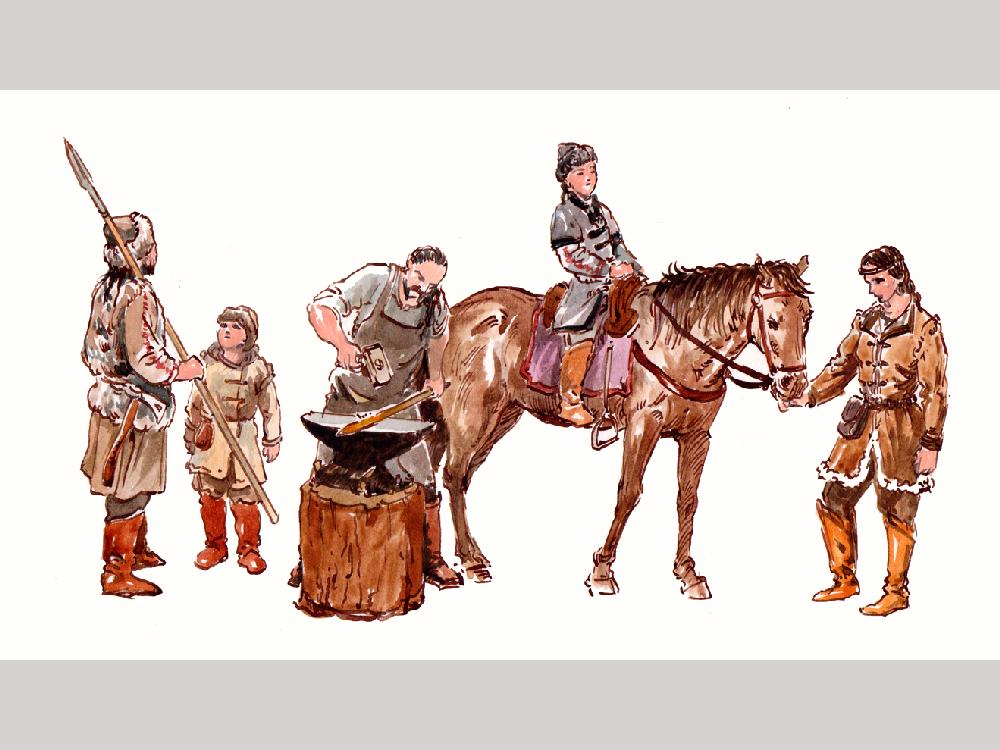With the establishment of the population in permanent settlements, more and more attention began to be paid to agriculture. The Bulgarians grew all the crops known during that era - rye, barley, millet, oats. The most prevalent among them were wheat and millet, which provided the main food - bread. Grape growing and wine production were present in all regions of Danubian Bulgaria. The fact that the “laws of Krum” were introduced, which aimed to limit the uncontrolled use of wine, is especially eloquent. At the same time, despite the statements of the chroniclers, the vineyards were not destroyed en masse. No nation would lose one of the main sources of food and livelihood so easily, especially since there has long been a tradition of wine growing in the Bulgarian lands. Wine production was strongly represented and wine was probably exported to the markets as far as Byzantium. It is no coincidence that until the conquest of the Bulgarians by the Eastern Roman Empire, state taxes were paid in wheat, wine and millet.
Various fruit-bearing trees were grown in the Bulgarian lands. Although the sources do not specifically mention the types of trees, they undoubtedly grew apples, pears, various types of plums, cherries, etc., which have been known since Thracian times.
Byzantium had a positive influence on the development of fruit growing on the Bulgarian territory and Slavic territories.
The production of flax was also widespread. Bulgarian flax was of very high quality and according to historical sources, traders sold their goods not only on the domestic market, but mostly on the markets in Constantinople.
For tillage, tools made of metal were used - sickles, hoes, scythes, etc. Tilling was done with plows, harnessed to a pair of oxen. Remains of hand mills were found during excavations in Pliska. These were used in the Bulgarian villages up to the early 20th century.
Some Byzantine chroniclers who described the Bulgarian land speak of mills that used the power of water, but there were also mills powered by animal power. The grain was stored in special pits in the yards, where it was stored for an extended period of time. The amphoras with wine were kept in similar pits (cellars) during the First Bulgarian and the Second Bulgarian kingdom.
Cattle breeding was highly developed in Danubian Bulgaria. In terms of the number of pigs, oxen and sheep raised, Bulgaria ranked first in comparison with its neighbours. The number of horned cattle raised was significant. Many of the initially built settlements within the boundaries of Danubian Bulgaria were initially temporary in nature, but gradually with the settlement of the population most of them acquired a permanent status and were fortified.
There is a lot of information about the development of sheep breeding and breeding "dairy sheep" in the monasteries. Horse breeding was also highly developed, which was associated with the traditions of raising these animals, which the Bulgarians of Asparukh brought with them across the Danube. The main part of the army during the First Bulgarian Kingdom continued to be the cavalry, although it also had established infantry companies and detachments, recruited and formed mainly from the territories inhabited by the Slavic population.
Fishing was also well developed. Fish was a staple food in the Bulgarian diet. Much of it was caught in Lake Ohrid. Various species of fish were supplied from the Danube to Constantinople.
The Bulgarians were also engaged in beekeeping and honey production. The Bulgarian population inhabiting the valley of the Strimon (Struma) River sold honey in Constantinople, which was extremely tasty and appreciated by the inhabitants of the Eastern Roman Empire.
The well-developed land farming, agriculture and cattle breeding in the Bulgarian lands during the First Bulgarian Kingdom created the required conditions for their rapid development. The strong, rich and varied food improved the health of the Bulgarian soldiers and gave them the strength they needed.
Guests and visitors of the Historical Park can try delicious and nutritious food, such as the ancient Bulgarians put on their table. It will strengthen your health and give you the energy you need to meet the challenges of today's dynamic everyday life.

